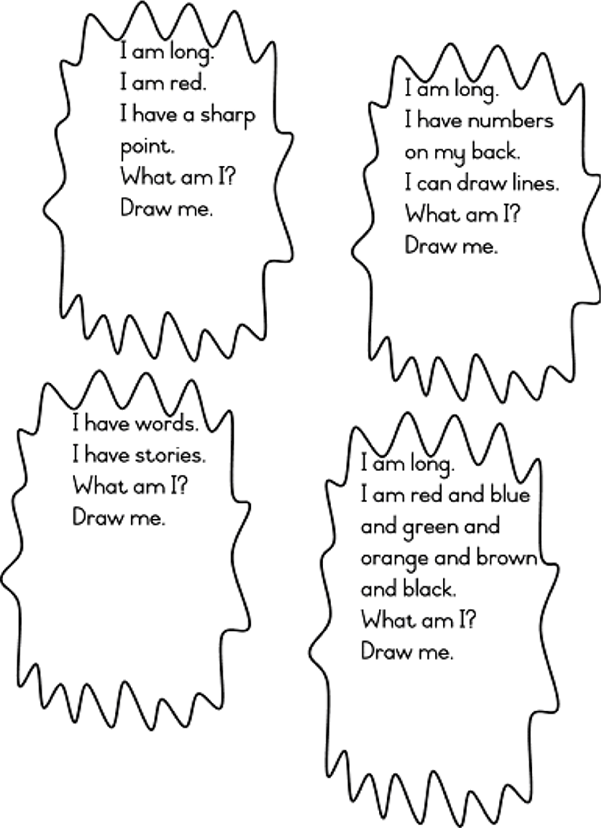| << Chapter < Page | Chapter >> Page > |
In Grade 2 the learners will build new experiences in the additional language on those learnt in Grade 1 as well as those learnt in their Home Language. They will continue to need many listening and speaking opportunities so as to develop their reading and writing skills in Grade 2.
A wide vocabulary is very important. The ICS modules for Grade 2 provide opportunities for the revision of Grade 1 vocabulary and they gradually introduce and consolidate new vocabulary by means of poems, rhymes, stories, riddles and jokes and games to play.
Learners are encouraged to answer questions, and to take part in discussions and conversations on familiar topics.
The attention is drawn to the sounds of letters in the additional language and learners discover that some letters sound the same as in their home language whereas others differ.
Although the educator will attend to correct pronunciation at this stage, learners should always be encouraged to speak the additional language without feeling incompetent and self-conscious.
By keeping the dictionary pages at the end of each module in a file, learners can revise the vocabulary and use these lists as a personal dictionary to which they can refer when completing or writing sentences and stories.
Time scheduled for the modules 1 to 8
It is suggested that the average learners complete all eight modules during the year, completing ± two modules per term.
The slower learners will proceed at their own pace while the quick learners can be given more tasks if necessary.
All learners in Grade 2 should be exposed to all the listening, speaking and reading activities in these eight modules to ensure that progression occurs throughout.
The escapades of Bobtail are continued in familiar surroundings for learners, namely, in school. New verbs are introduced naturally and learners illustrate the parts of the story.
Jumbled sentences are transcribed correctly and read back to the educator.
All the rhymes, poems, stories and activities use high frequency words for learners to recognise.
Integration of themes
Schools have rules and learners should obey these. Learners who disobey the rules must know they will be punished.

school to Hopper goes


rang bell Miss the Bun-Bun

| LO 3.1.5 | LO 3.2.4 | LO 6.3 |

played Mop his friends with


was asleep fast Bobtail

| LO 3.1.5 | LO 4.1 | LO 4.5 | LO 4.6 |

pencil

ruler

crayons

rubber

book

numbers

words

bunnies
1. Hopper writes with a ..........................................................................................
2. Mop draws with ..................................................................................................
3. I draw lines with a ...............................................................................................
4. Flopper reads his .................................................................................................
5. We add our ..........................................................................................................
6. There are many ................................................................................... at school.
| LO 3.1.5 | LO 4.1 | LO 4.5 | LO 4.6 |

a ruler?
a book?
crayons?
pencil?
| LO 1.2 | LO 3.5 |
Learning Outcome 1: LISTENING : The learner is able to listen for information and enjoyment and respond appropriately and critically in a wider range of situations.
Assessment Standard 1.2: We know this when the learner shows understanding of a simple description by identifying what is described;
Learning Outcome 3: READING AND VIEWING : The learner is able to read and view for information and enjoyment, and respond critically to the aesthetic, cultural and emotional values in texts
Assessment Standard 3.1: We know this when the learner uses pictures to understand written texts:
3.1.5 draws a picture to illustrate a sentence;
Assessment Standard 3.2: We know this when the learner begins to make meaning of written text by reading with the teacher:
3.2.4 answers short questions about the story;
Assessment Standard 3.5: We know this when the learner reads fiction and non-fiction books at an appropriate level for information and enjoyment.
Learning Outcome 4: WRITING : The learner is able to write different kinds of factual and imaginative texts for a wide range of purposes.
Assessment Standard 4.1: We know this when the learner chooses and copies a caption which accurately describes a picture;
Assessment Standard 4.5: We know this when the learner puts jumbled sentences in the right order and copies them;
Assessment Standard 4.6: We know this when the learner uses punctuation – capital letters and full stops;
Learning Outcome 6: GRAMMAR AND VOCABULARY : The learner knows and is able to use the sounds, vocabulary and grammar of the language to create and interpret texts.
Assessment Standard 6.3: We know this when the learner understands and uses some modals.

Notification Switch
Would you like to follow the 'English first additional language grade 2' conversation and receive update notifications?